Tile of Spain manufacturers returned to Valencia, Spain last month for the 41st edition of CEVISAMA, the International Fair for Ceramic Tiles and Bathroom Furnishings. More than 70,000 industry professionals from around the world filled the exhibition floor, exploring the latest advancements from over 500 exhibitors. Over the course of the show, Spanish tile manufacturers showcased cutting-edge developments in production techniques and technologies, demonstrating the true “secret ingredient” of Spanish ceramics. Below is a summary of the design trends highlighted by select companies participating in Tile of Spain USA’s “Passport to Creativity” tour, along with comments by ceramic tile specialist Ryan Fasan.
A Terracotta Renaissance

Afra by Harmony. Photo: Tile of Spain
Terracotta is experiencing a huge resurgence. Driven by its timeless charm and dynamic versatility, an increasing number of homeowners and interior designers are embracing various shades of natural clays in their designs. Across the globe, unique interpretations of terracotta tiles are being utilized to emphasize a return to earthy materials and a desire to create spaces that feel warm, welcoming and rooted in tradition. From the off-white hues found in Turkey, France and Croatia, to the peachy tones typical of Central Europe and the rich rusty shades commonly seen in Northern Africa, Morocco and the southern Mediterranean, Spanish manufacturers are offering a wide range of rustic-inspired tones to meet the demands of today’s market.
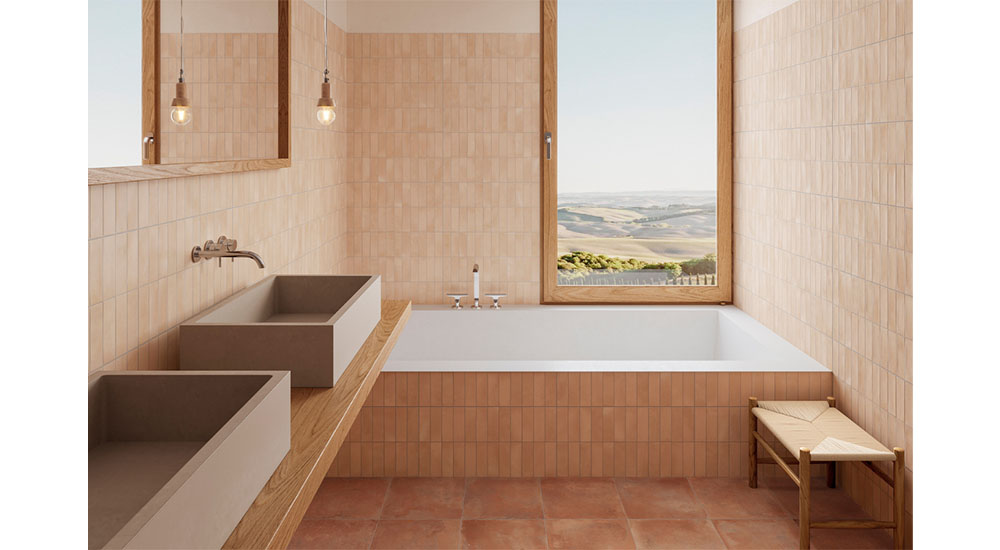
Deco Biscuit by Gayafores. Photo: Tile of Spain
Fasan tells KBB, “This is not just about nostalgia; it’s about reconnecting with materials that feel honest and organic. The beauty of terracotta is in its imperfection, its variation and its warmth. These qualities, combined with advanced ceramic technology, allow us to achieve that timeless aesthetic in formats that are durable, versatile and easy to maintain.”
Earth-Led Accents

Crayon by Natucer. Photo: Tile of Spain
Many emerging ceramic collections are incorporating organic colors and textures as accents to curate a tranquil and natural atmosphere. These nuanced details are carefully selected to complement the prevailing earth tones and natural flora that dominate current designs. Tiles are being produced in soft browns, greens and blues to seamlessly blend with today’s biophilic styles.
“It’s no surprise that as we gravitate towards earth tones, the natural accents that accompany them are greens and blues. But rather than bold, saturated versions of these hues, we’re seeing desaturated, earthy iterations – mossy greens, muted sages and soft, dusty teals that feel more in tune with their surroundings,” said Fasan.
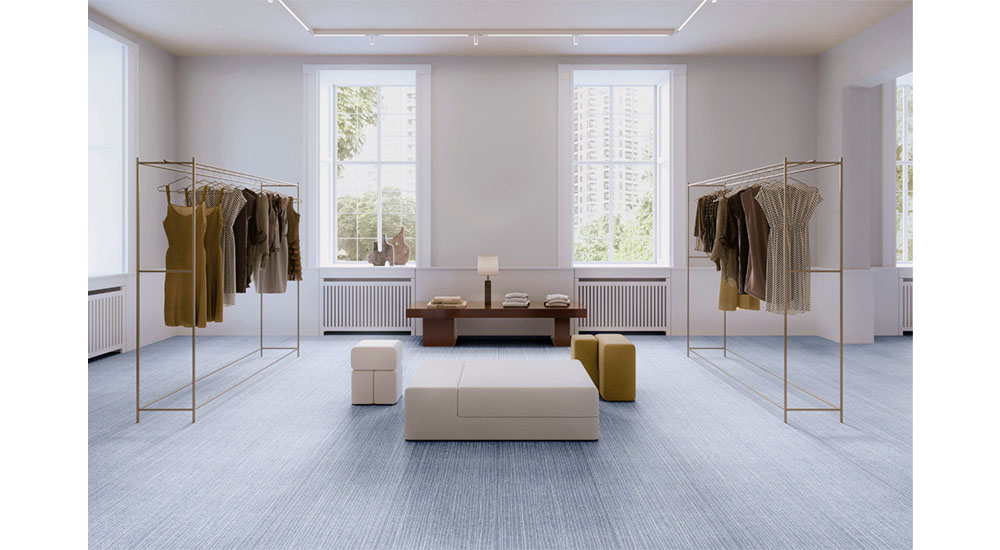
Yoku by Apavisa. Photo: Tile of Spain
He continues, “It’s about creating harmony rather than contrast. These colors blend seamlessly with terracotta, sandstone and other warm neutrals, reinforcing a sense of grounded, biophilic design. It’s a palette that feels familiar, lived-in and inherently calming.”
Ceramics As Ceramics
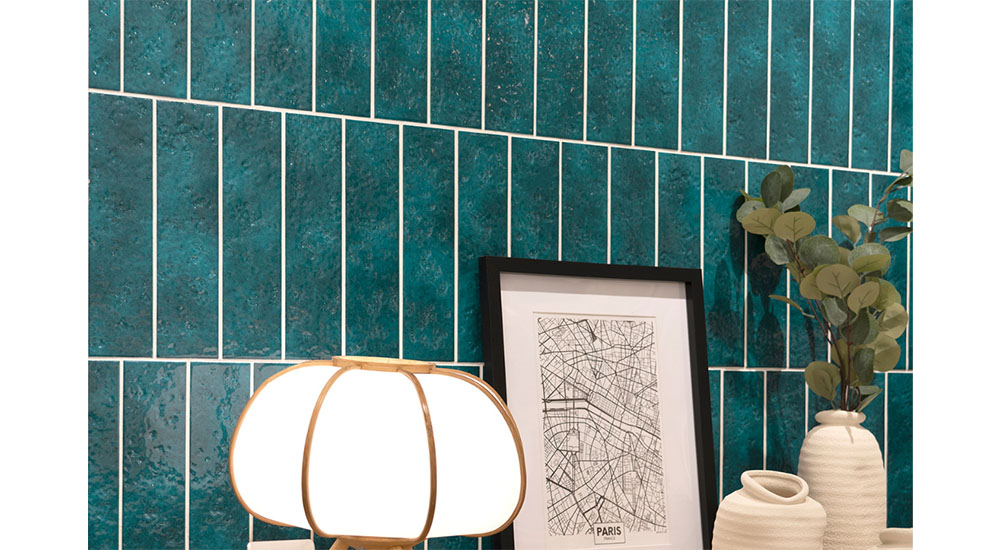
Amalfi by Mainzu. Photo: Tile of Spain
The tile industry is experiencing a revival of creative approaches that embrace the inherent qualities of ceramics. Celebrating their classic, enduring appeal, some Spanish tile makers are shifting away from mimicking the look of other materials and instead honoring the beauty and characteristics of ceramics itself. The artisanal charm of handcrafted ceramics is gaining popularity, with companies incorporating subtle ridges and 3D textures to create both a visual and tactile experience.

Orion by Decocer. Photo: Tile of Spain
Fasan notes, “This is where artistry meets industry. Whether it’s handcrafted-looking reliefs, vibrant glazes or textures reminiscent of ancient ceramics, the new wave of tile embraces the character of ceramic itself. We’re seeing everything from glossy, irregular glazes to graphic, abstract patterns that feel like modern mosaics—tiles that aren’t trying to be something else, but rather embracing their own inherent beauty.”
Echos of the Past
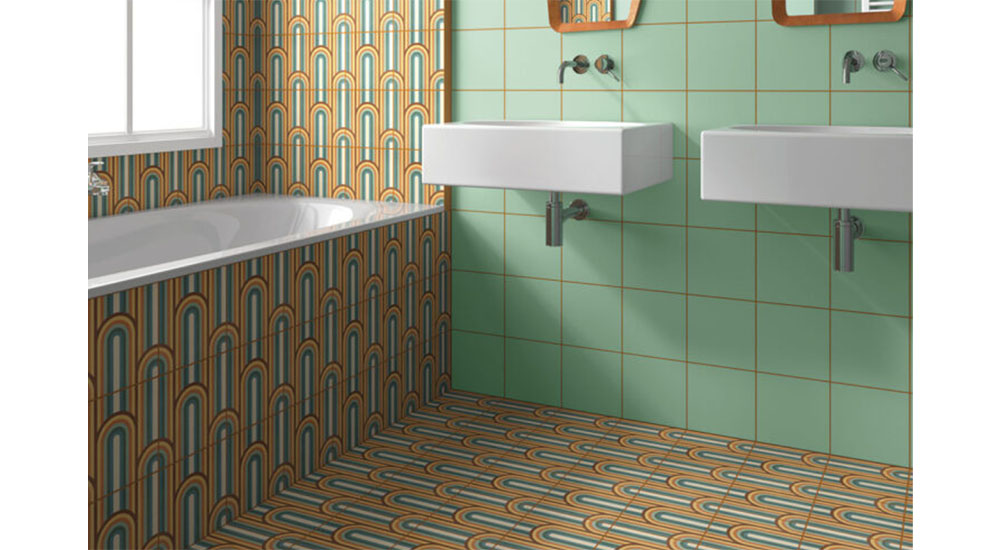
Groovy by Cevica. Photo: Tile of Spain
Spanish manufacturers are looking to the past to shape the trends of the future. When curating interiors that offer solace and reprieve, designers and homeowners are seeking surfaces infused with nostalgia and comforts of the past. Drawing inspiration from historical design elements and past tile trends, Spanish companies are reimaging these styles for modern environments. Today’s tiles showcase a revival of classic patterns and vintage color palettes, along with weathered effects to make them appear as if they’ve been exposed to the elements over time.
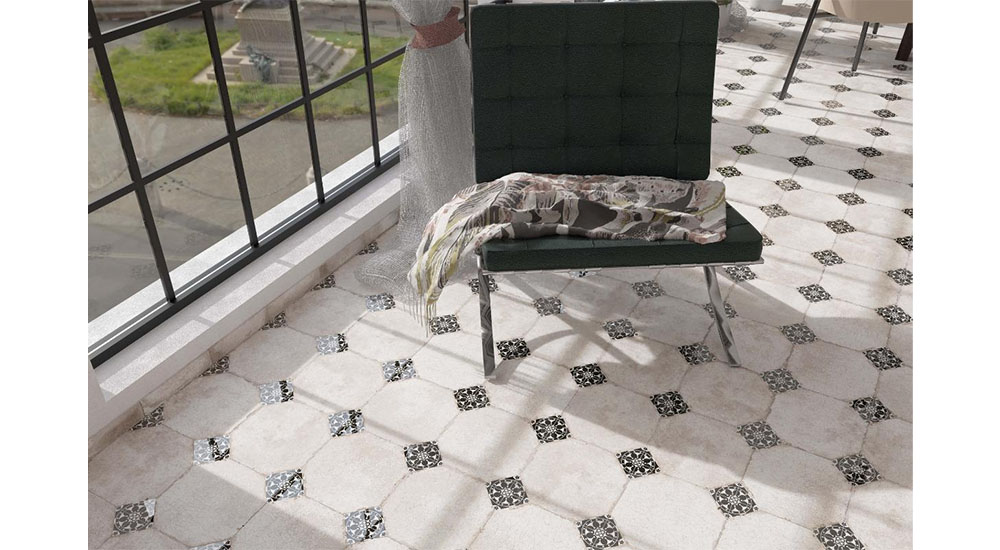
Cézanne by Cerlat. Photo: Tile of Spain
“There’s a deep human connection to history and we’re seeing that reflected in tile design,” Fasan tells KBB. “The resurgence of vintage-inspired patterns, heritage color palettes and weathered finishes isn’t just about aesthetics – it’s about storytelling.”
Technology-Driven Sophistication
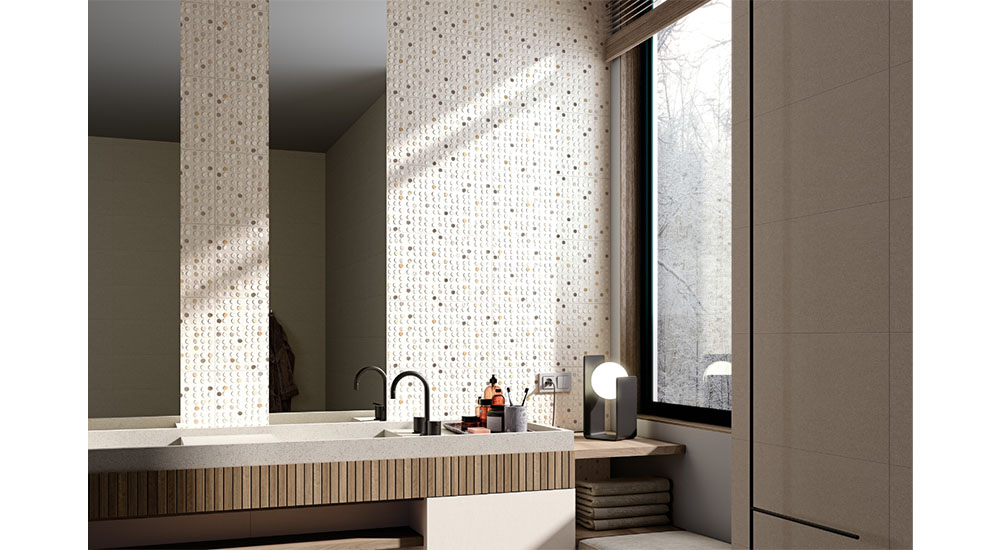
Dúo by Vives. Photo: Tile of Spain
Spanish tile brands are focused on finding innovative ways to offer elevated aesthetics while reducing both landed and installation costs for consumers. In response to the growing demand for affordable luxury, manufacturers are leveraging several advanced techniques to achieve upscale looks without neglecting quality or performance. Through methods like scoring, digitally targeted glaze application and reducing thickness and weight, companies are able to achieve high-end looks at lower costs for customers.
Fasan comments, “This isn’t just about mimicking aesthetics; it’s about enhancing functionality. Unlike natural stone, ceramic and porcelain alternatives don’t require sealing, won’t stain as easily and can be produced in a wider range of formats – including ultra-thin, large slabs that minimize grout lines for a seamless look.
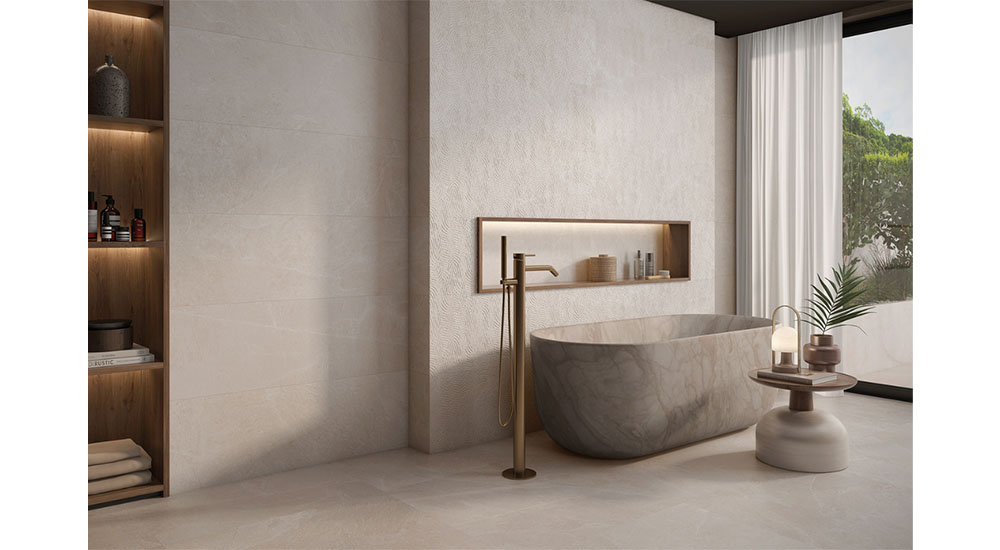
Masaya by Keratin. Photo: Tile of Spain
“Sustainability also plays a key role in this trend. Instead of quarrying finite natural resources, stone-look tiles are crafted from abundant raw materials in a controlled process that minimizes waste. It’s a win-win: designers get the high-end aesthetic of real stone and consumers get a product that’s easier to maintain and better for the environment.”








